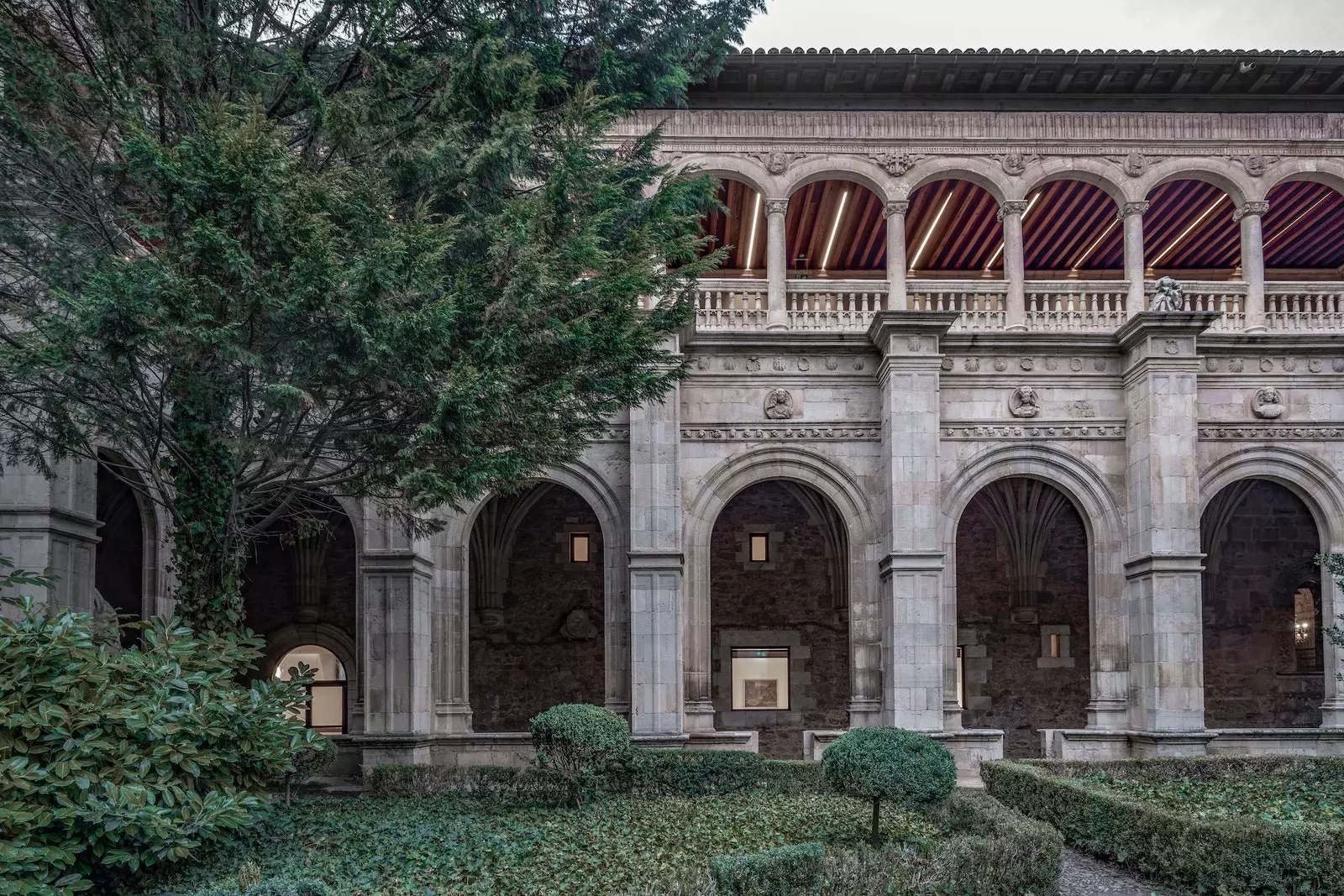
Cloister of the recently renovated Parador de León
Few cities can boast of having a hotel so historic and spectacular that it dares to look directly at (and almost over its shoulder) the cathedral itself. León can, and that its cathedral is only comparable –sorry for fueling the eternal rivalry– with that of Burgos. It is the Hostal de San Marcos (which has little of a "hostel"), one of the most beautiful examples of Spanish plateresque, which has just reopened its doors after three years of rigorous reform and tuning which once again place it at the top of the crown of the National Parador network.
Thus begins, now, a new stage in the life of a complex building whose exciting story is lost at the dawn of the Middle Ages and that has seen and served everything: hostel of the Order of Santiago, Institute of Secondary Education, House of Missionaries, Veterinary school, prison hospital, house of the Piarist Fathers, Office of the General Staff of the Seventh Army Corps, barracks of Cavalry, headquarters of the Diputación, Diocese and Ministry of War... even a gloomy concentration camp during the Franco regime and a stable of stallions.
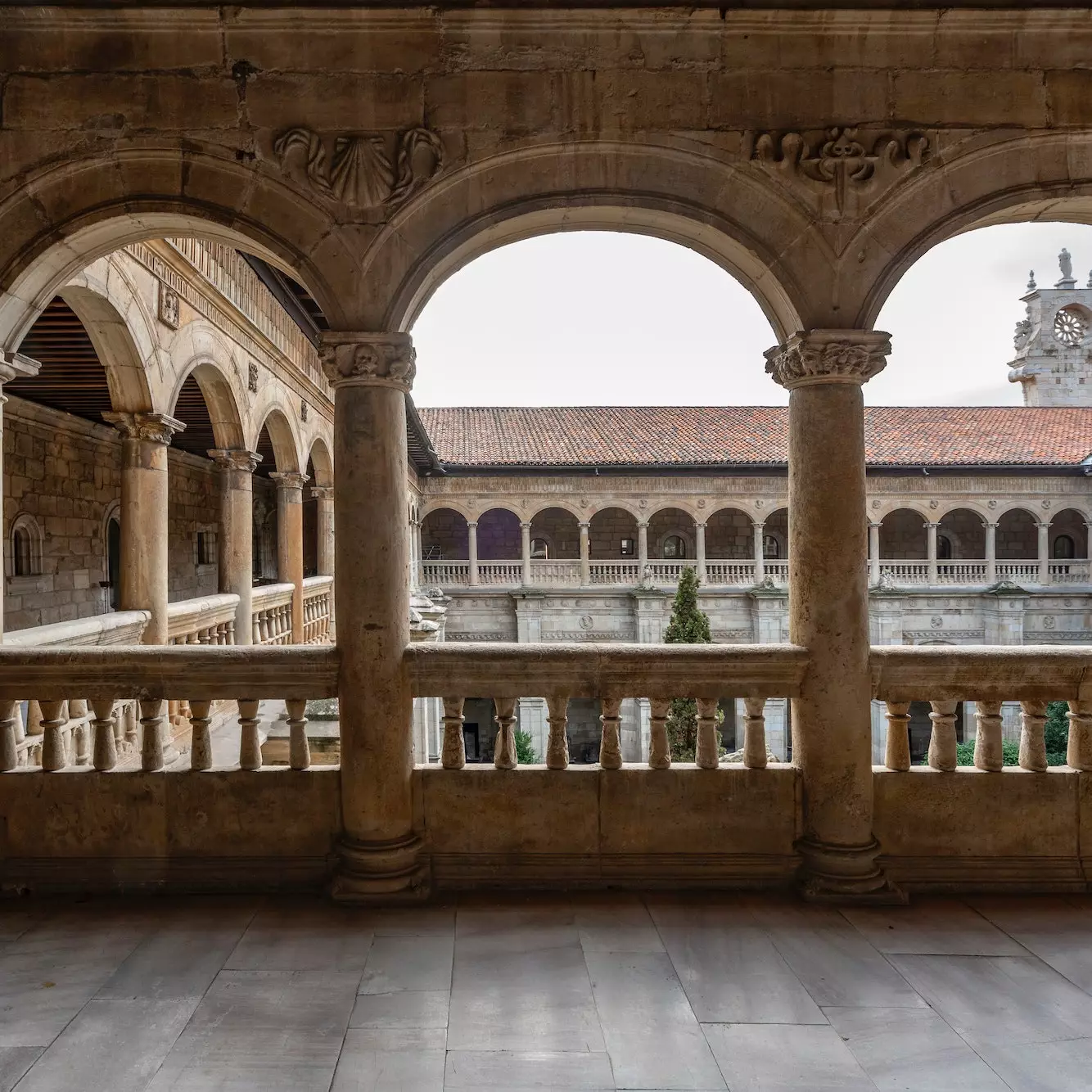
Arcades of the cloister of the Parador de León
Reviewing its history would take us several articles. We would talk to you about the time when León was one of the main points of the Camino de Santiago, of the stories that Quevedo left written when he was imprisoned , from when Manuel Fraga Iribarne, then minister, transformed it into a Parador Nacional to promote tourism in his wife's city... But no, what interests us now is to tell you what the new Hostal de San Marcos looks like and why it has become immediately in one of the most charismatic and art-laden hotel establishments of our country.
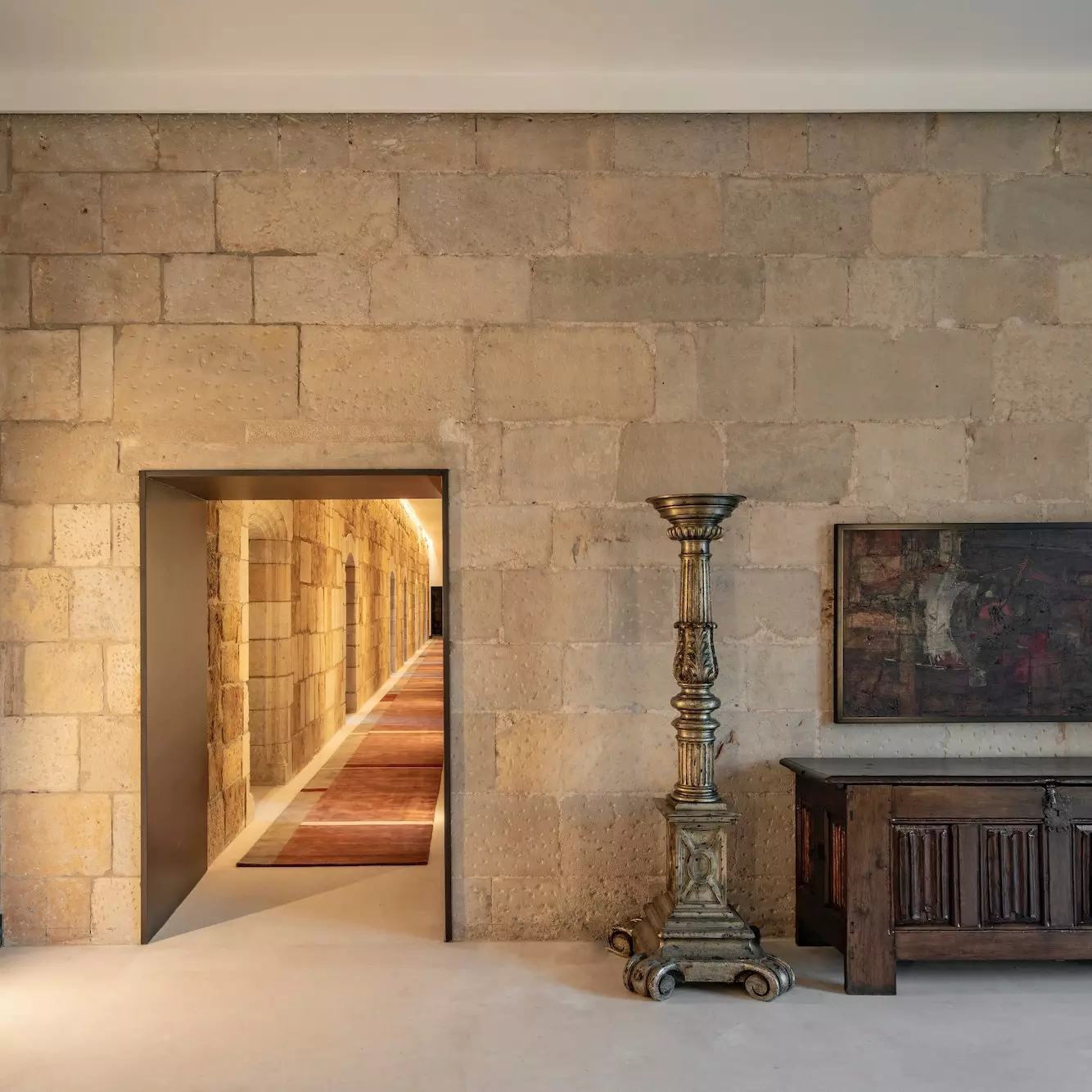
The decoration is contained, to give prominence to art and architecture
MASTERPIECES
We begin with the façade, from which it has been possible to erase all signs of the pathology that the Boñar stone presented in which it was built (just like the cathedral). In the brilliant renovation of the historic building, by Mina Bringas, it has been done, in the words of the architect herself, "always with actions that do not touch the original parameters, reversible in all cases and respectful of everything: with the material itself and with the volumetry of the original spaces”.
It highlights the construction of a new atrium bathed in light that, dominated by an abstract mural by Lucio Muñoz, now serves as a cafeteria and social epicenter, and as access point to an extraordinary museum of contemporary art in which works by such outstanding artists as Juan Genovés, Antonio Saura, Carmen Laffón, Rafael Canogar, Francisco Farreras or Menchu Gal are exhibited.
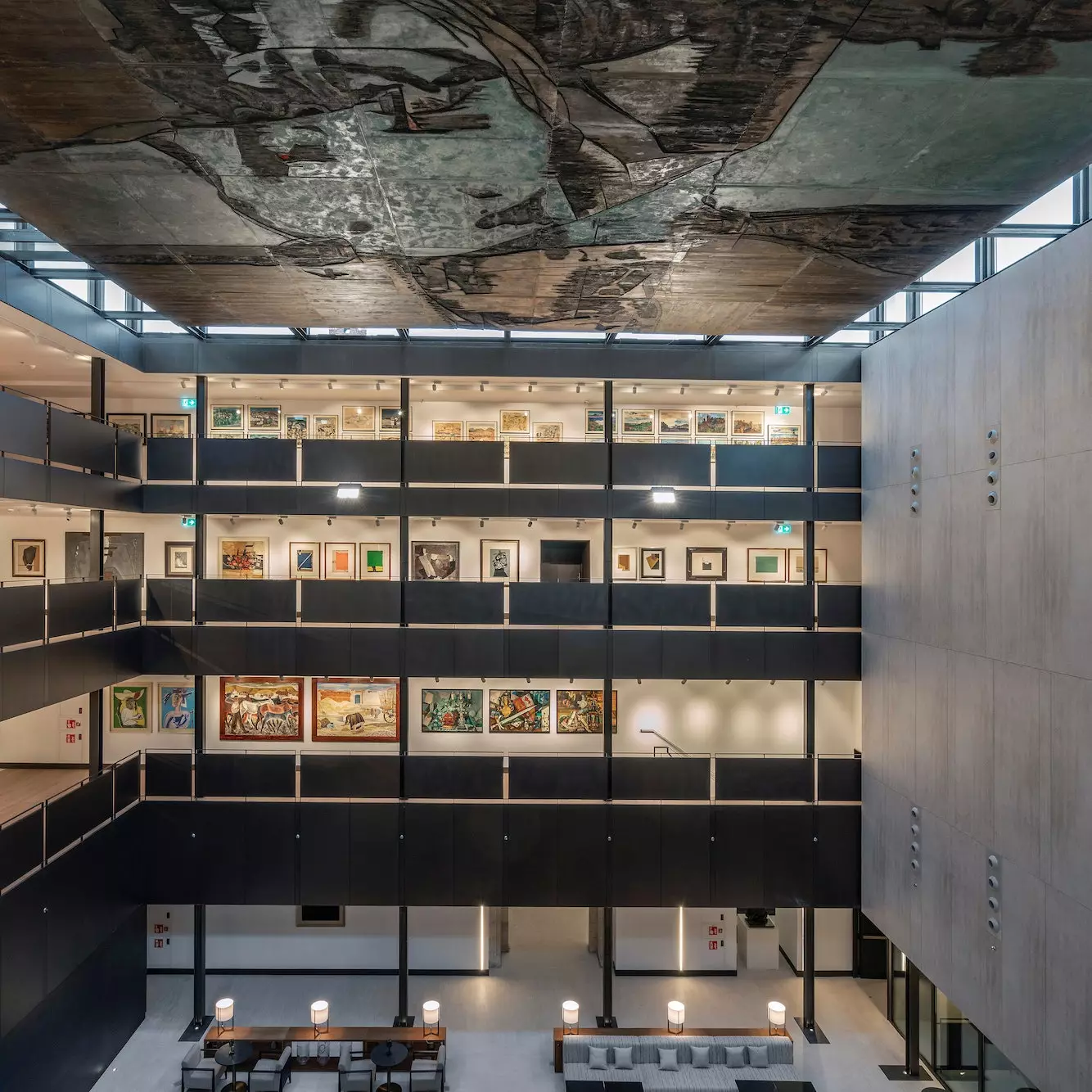
The new atrium will serve as a social epicenter point and an access point to the contemporary art museum
Total, the number of exhibited works amounts to 500 and, also distributed throughout the common areas so that they can be enjoyed by both guests and visitors, include masterpieces of ancient art that have been restored taking advantage of these three years of closure for reforms. Among them stand out the relief of the Descent or the altar of The Birth of Christ by Juan de Juni, a masterpiece of the Spanish Renaissance that has been restored under the criteria of minimal intervention and that today is located in the old cloister; the choir stalls of the church, carved in walnut without polychrome, one of the best in its genre and time in our country; the Immaculate by Antonio de Pereda y Salgado, the 16th century coffered ceiling of the Chapter House, in addition to emblematic pieces such as the 18th century mirrors that today preside over the main staircase.
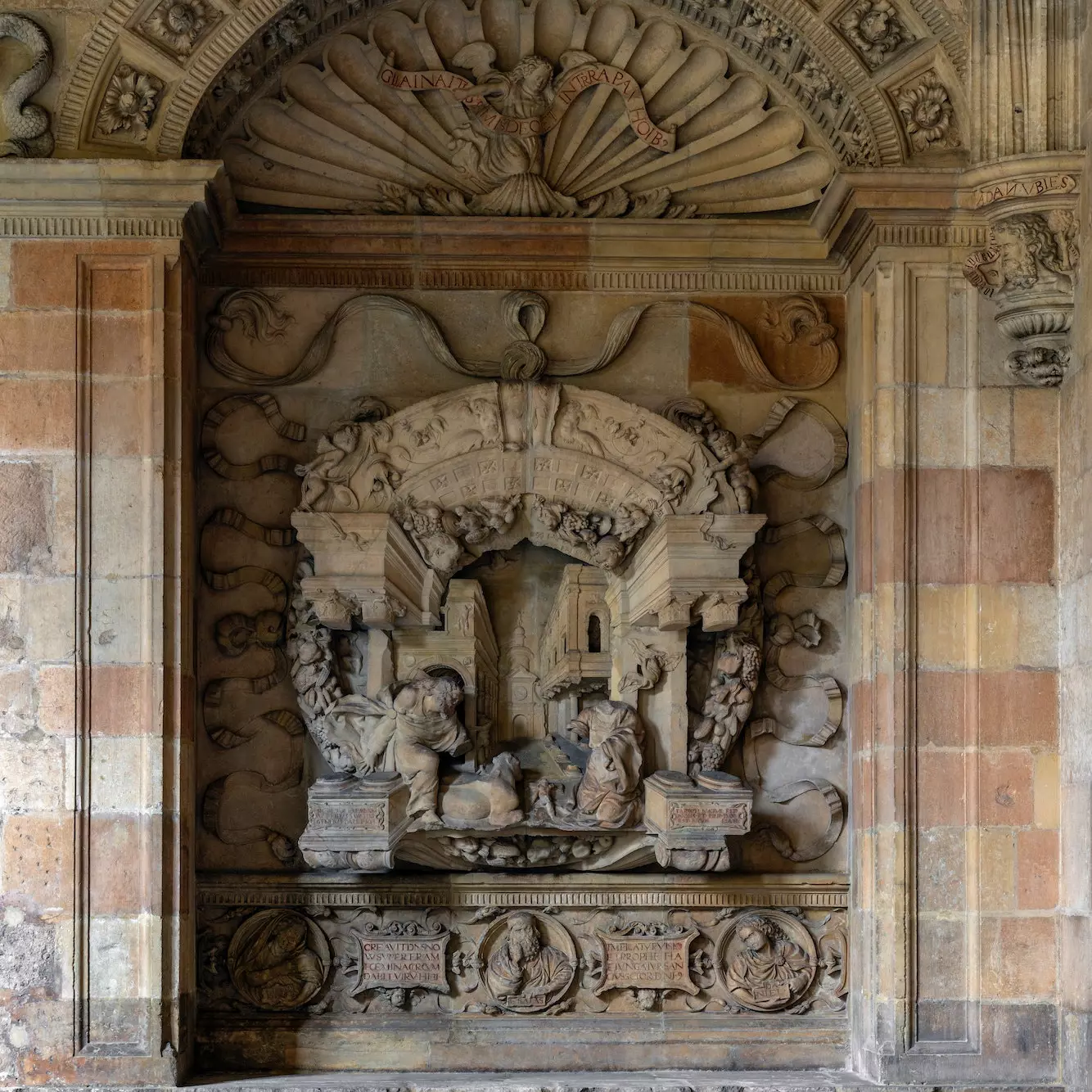
The relief of the Descent, by Juan de Juni, one of the restored masterpieces
REGIONAL CRAFTSMANSHIP AND SPANISH LUXURY
In contrast to the exterior and the overwhelming display of art, the decoration of the interiors is sober, restrained, almost monastic. The purpose: not to distract attention and highlight the commitment to unique regional crafts that connects the visitor with the city of León.
The person in charge of the interior design has been the Merry Studio, which has faced the challenge as if it were the restoration of a painting: “The Hostal de San Marcos is so powerful that the decoration should not be noticed”, comments Alfonso Merry del Val.
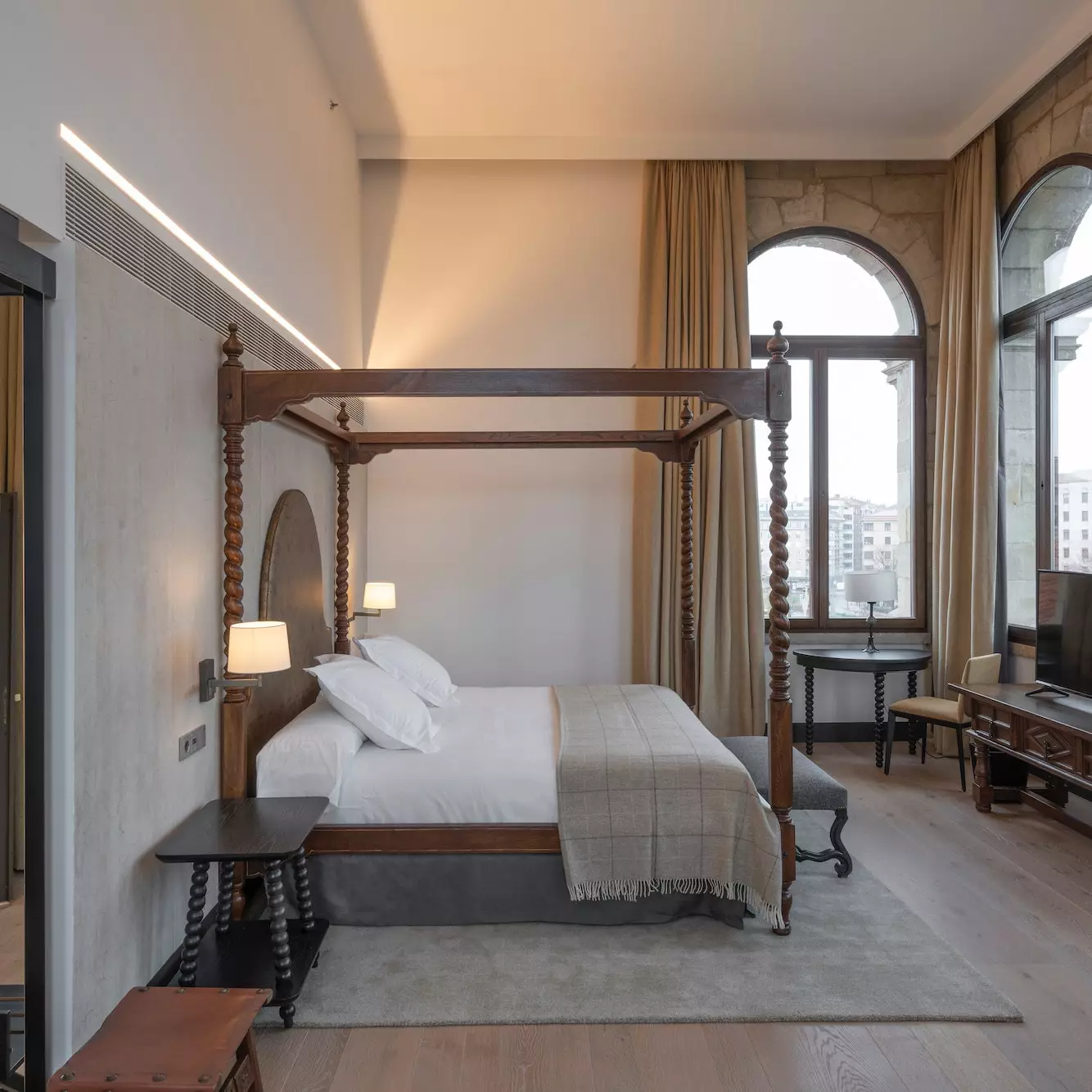
Elegant sobriety and regional crafts in the rooms
For it more than 600 pieces of furniture have been recovered that were in the Parador before the reform, some of which have been reused for new uses, such as the old doors, which have been transformed into headboards of the new rooms.
For the rugs, Paul Heredia has been inspired by works from the Parador's contemporary collection. And for the elaboration of the curtains, the firm Gastón y Daniela has reissued a canvas from the 1950s by Arcadio Blasco, contemporary of Lucio Muñoz and the rest of contemporary artists whose works can be seen in the exhibition area of the new atrium.
In the 51 rooms** the bed plaids are the typical woolen blankets of the Maragato people of Val de San Lorenzo,** in the restaurant crockery there are clay pieces by Jiménez de Jamuz, an artisan from the town of La Bañeza, and the flower arrangements are made in the famous Maria Jose Ijar Florist, in Leon.
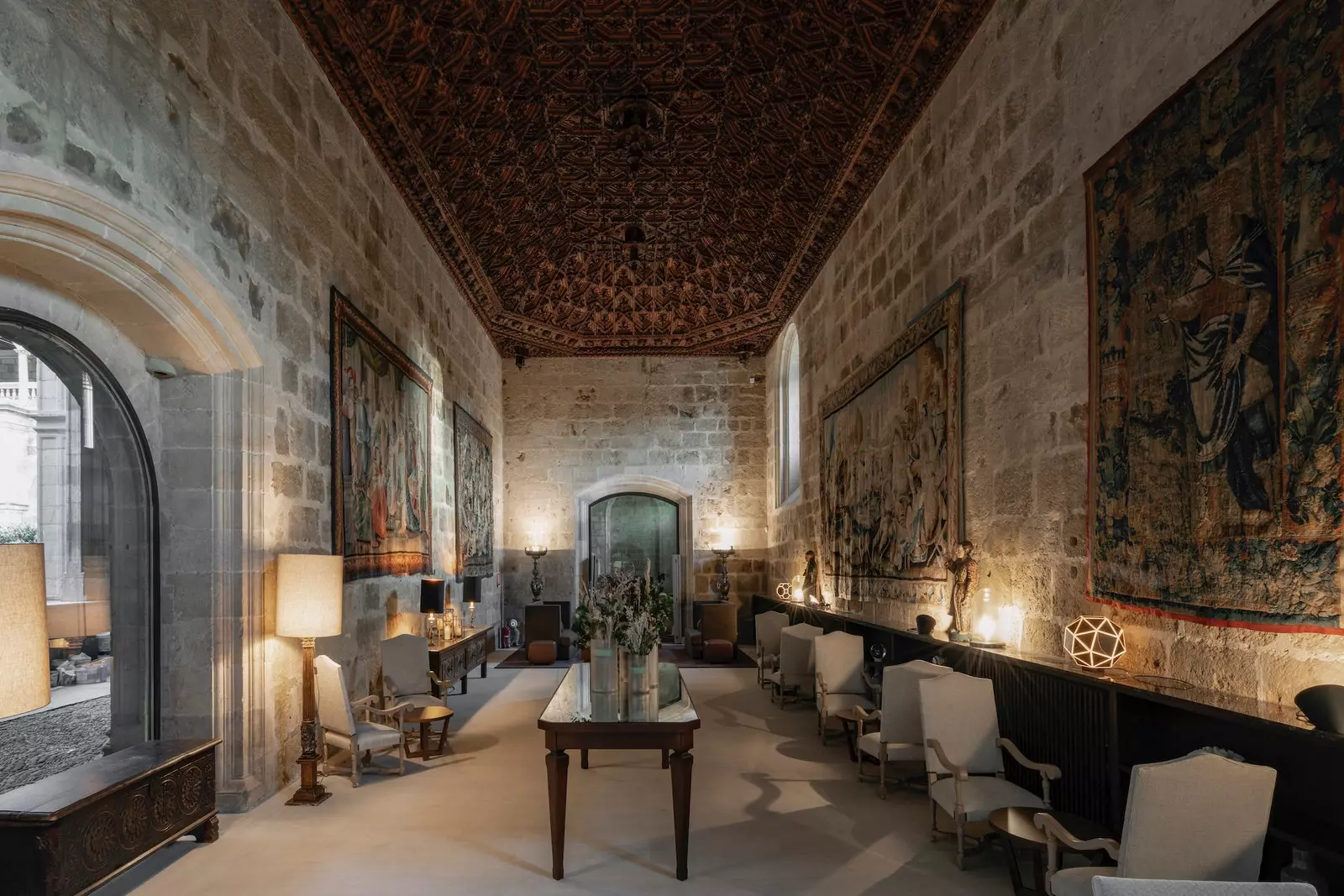
One of the common areas of the Parador de León
